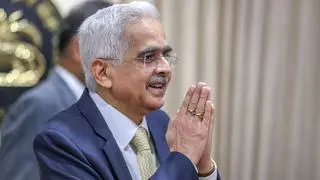India Inc. may heave a sigh of relief as prominent banks have slammed the brakes on hikes in the marginal cost of funds-based lending rate (MCLR). This will ensure that their cost of borrowing from banks will stabilise at current levels.
Banks such as State Bank of India and Bank of Baroda have left their MCLR unchanged in May 2023 in view of the monetary policy committee (MPC) maintaining status quo on the policy repo rate at its last meeting in April and term deposit rates almost peaking out.
MPC meeting
The MPC is expected to persist with the status quo in its next meeting, scheduled from June 6 to 8, as well as in the wake of retail inflation in April 2023 easing to an 18-month low of 4.70 per cent from 5.66 per cent in March.
The status quo on MCLR by large banks comes at a time when credit to large industries has picked up, rising by 3 per cent in FY23 as compared with 2 per cent in FY22.
“If we are able to maintain our cost of deposits, we don’t really have to increase our MCLR,” A Manimekhalai, MD and CEO, Union Bank of India, told businessline in a recent interaction.
Banks’ prices for corporate loans with reference to MCLR. This benchmark rate includes four components: marginal cost of funds; negative carry on account of cash reserve ratio; operating costs; and tenor premium.

Banks’ fully transmitted the cumulative 250 basis points (bps) hike in the repo rate during the May 2022–March 2023 period to their external benchmark-based lending rates (EBLRs). They price floating-rate retail loans and MSME loans with reference to this benchmark.
However, the MCLR, the internal benchmark for corporate loan pricing, rose by only 140 bps over the same period.
Manimekhalai observed that about 40–45 per cent of Union Bank’s corporate loan book (of ₹3,73,188 crore as at March-end 2023) has already been repriced due to the increase in MCLR. In the current year, the remaining book will be repriced, thereby enabling the bank to maintain a net interest margin of at least 3 per cent.
‘No reason to increase rates’
“From what I have seen is that the peak in deposit rates has already been reached, with the maximum deposit rate that commercial banks offer being about 7.75 per cent…Since MPC has taken this position of status quo, the repo rate component of MCLR doesn’t change. So, deposit rates have not been increased by large banks across any of the tenors,” said Madan Sabnavis, Chief Economist, Bank of Baroda.
Referring to RBI Governor Shaktikanta Das’ observation last week that the improved CPI data for April has given the central bank confidence that monetary policy is on track, Sabnavis opined that this is an indication that in the next MPC meeting, status quo on the repo rate will also continue. Therefore, there is no reason for banks to increase deposit and lending rates.
“Another reason why banks are not increasing deposit rates is that the gap between credit and deposit growth has narrowed down. We are in the so-called slack season. So, credit offtake will slow down. So, there is no pressure on upping deposit rates. The net liquidity in the banking system is coming close to balance,” the BoB Chief Economist said.






Comments
Comments have to be in English, and in full sentences. They cannot be abusive or personal. Please abide by our community guidelines for posting your comments.
We have migrated to a new commenting platform. If you are already a registered user of TheHindu Businessline and logged in, you may continue to engage with our articles. If you do not have an account please register and login to post comments. Users can access their older comments by logging into their accounts on Vuukle.